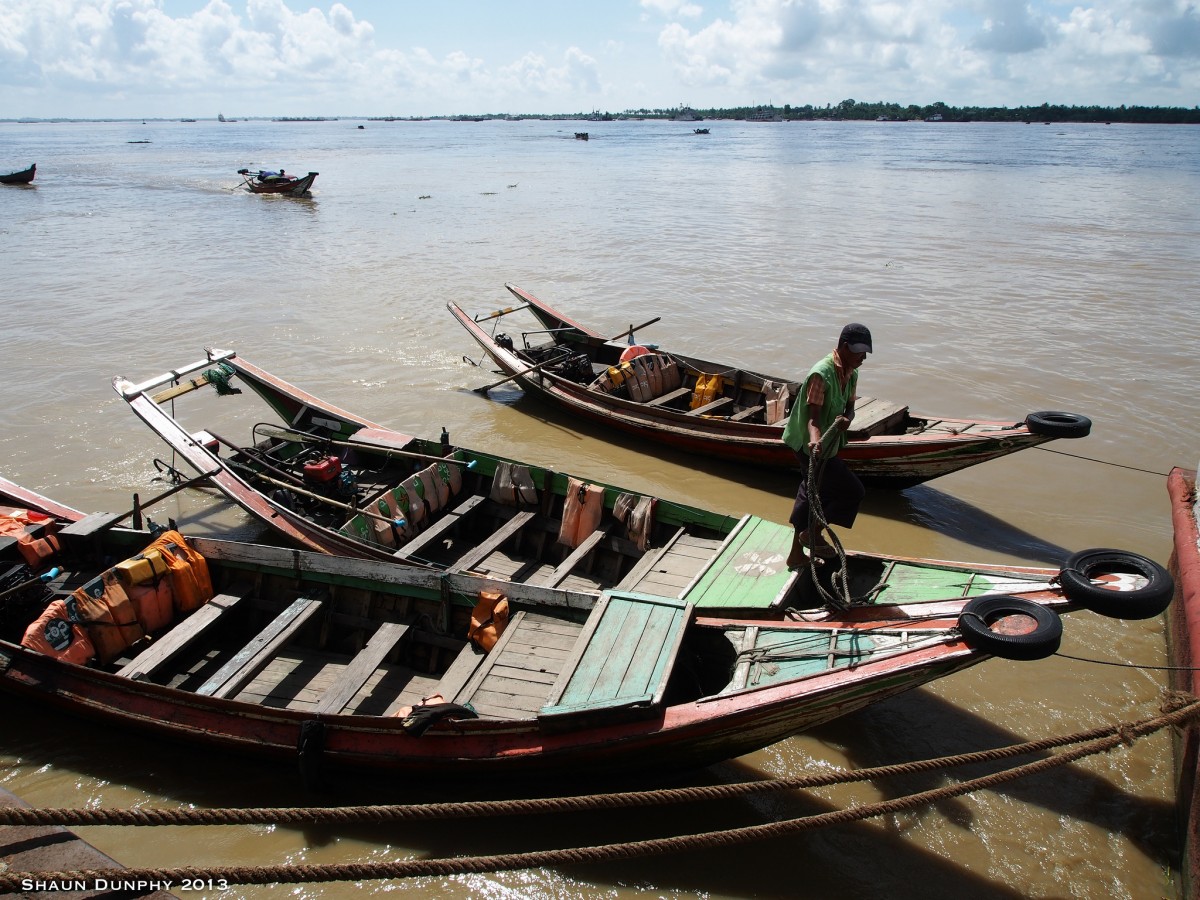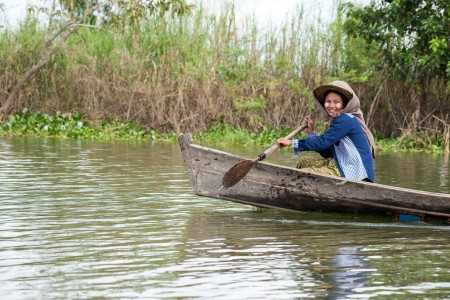While Myanmar struggled through decades of political and economic repression, the country’s river systems lay relatively untouched. But hand-in-hand with democratic reform has come a race to develop the country’s natural resources. As Myanmar opens up to the world of foreign investment, many new challenges and opportunities are presenting themselves. Rivers, in particular, face a range of serious threats – unsustainable hydropower development, pollution, resource exploitation and ad hoc development.
But there is one issue that may undergird them all: lack of access to data.
Efforts to ensure that these rivers remain healthy and able to provide for people, ecosystems and biodiversity is highly dependent on accurate and detailed information. Greater availability of data on topics such as sediment dynamics, industrial pollution, biodiversity, fish catches, and agricultural land use would greatly help to ensure sustainability of livelihoods and ecosystems.
As Myanmar works through the transition towards greater transparency, exploring where data gaps are so they can be filled is crucial. But just as important is opening up existing data sets held by national agencies and digitizing the sets currently held only in hard copy, accessible by a select few. These have the potential to play a key role in whether Myanmar succeeds in developing sustainably.
Some of Asia's most iconic rivers flow through Myanmar, such as the 2,170 km long Ayeyarwady River which flows from the Himalayas to the Andaman Sea, or the 2,400 km long Nu-Salawin-Thanlwin River (collectively known as the Salween), which also flows through China and Thailand.
The transboundary basins of these rivers are home to an estimated 50 million people. In Myanmar alone, two thirds of the population live within, and greatly rely on the natural resources linked to, the Ayeyarwady River Basin. Similarly, the Salween river basin is critically important to the more than 6.1 million people who live within it. Many of these ethnically diverse communities are highly dependent on these rivers for their incomes, transport and increasingly industrial development and power generation. Both of these rivers support extremely diverse ecosystems, the extent and variety of which is still being discovered.
As Myanmar's industrial, agricultural and other economic development leaps forward, its rivers are under increased pressure from hydropower development, and industrial and urban pollution. There has never been a greater need to understand how this is impacting the health and sustainability of these rivers, the ecosystems that form part of them and the many millions of – often poor – people that depend on them.
Preliminary studies and analysis conducted through the CGIAR Research Program on Water, Land and Ecosystems (WLE) on the River Health in the Ayeyarwady and River Health in the Salween and research projects led by the International Water Management Institute (IWMI) has identified a number of significant areas where greater access to, and analysis of, existing data, and a greater focus on filling data gaps about these rivers could have very positive results.
It's very difficult to judge the impacts of deforestation, erosion, pollutants, or to confirm or refute claims of damage caused by development without starting from a solid data baseline. Initiating thorough baseline studies to establish current conditions, uses and the value obtained from each river would greatly help to inform development planning.
For example, it's impossible to assess the current or potential impacts of hydropower development, or put in place measures to mitigate any negative impacts of it, without data. Without data it is difficult to maximise power generation effectively or to develop a holistic, coordinated development plan for the whole of each river basin. Both of these rivers have very high sediment loads so trapping them behind dams may have a significant impact on the viability and sustainability of these developments as well as on the health of the river ecosystems. Without a solid baseline it's impossible to evaluate what the most effective, least impactful scenarios could be. Establishing solid, widely available baselines would of course be most beneficial if conducted before large-scale development proceeds so that benefits can be optimized and impacts mitigated.
Developing detailed hydrological models that accurately show or evaluate river flow regimes, or which can detect changes due to development, climate change or other factors, is currently very challenging. This may not in fact be because this data doesn't exist, but may be more a question of an inability of many researchers to access to it. Without access to sufficient, accurate hydrological data to inform resource management and planning, key decisions may be made largely without any solid evidence base to support them. For example, comprehensive data on sediment loads and dynamics would help inform further development of the transport networks on the Ayeyarwady and Salween rivers in ways that would be effective and more sustainable. Analysis would also enable decision makers to put in place tailor-made, context-specific strategies to mitigate the impacts of climate change.
There is increasing evidence of the impacts of reduced water quality being felt by communities and ecosystems. But data to accurately evaluate the scale and extent of these impacts, or accurately attribute their causes, is hard to come by.
The rapid intensification of agriculture and development of the mining sector which is taking place is likely to exacerbate pollution levels. Likewise, rapid industrial development and expansion of urban areas without adequate waste and waste water treatment facilities will have significant impacts on river water quality. Further research on, and analysis of, changes in the water quality could ensure pollution levels are better understood and kept to a minimum, thereby safeguarding the livelihoods and health of the many millions of people who depend on these river ecosystems. At the very least, a solid baseline is needed to establish the current situation.
Key areas of the Ayeyarwady, are recognised biodiversity hotspots and are very important to conservation of a number of endangered species. Yet there doesn't appear to have yet been a thorough, systematic review of Myanmar's biodiversity and varied ecosystems. Meanwhile, deforestation (to choose one example), through both legal and illegal logging, is putting many of the ecosystems these flora and fauna are part of on under considerable pressure. Without more research and analysis of relevant data, the rapid pace of development and change in Myanmar could wipe out key elements of the country's rich biodiversity before they're fully understood. The Irrawaddy dolphin, which the Myanmar Department of Fisheries is working to try to conserve, is a case in point.
Myanmar is highly dependent on fisheries for national food security, community incomes and export. In order to effectively to monitor and manage these resources, or to ensure sustainability of existing fisheries let alone future development of the sector, researchers and others need to document, or gain access to, and then analyse data. For example on the quantity and types of fish consumed, the extent and productivity of fisheries and the aquaculture sector as a whole, and the role and extent that these activities play in community livelihoods and diets.
There are diverse reasons for the current gaps in existing, or easily available, data on these two rivers. However, it's clear that decisions made now on river use and development will greatly influence their future health, their ecosystems and the services they provide to the people of Myanmar. So the need for readily available, detailed and accurate data on the diverse aspects of these rivers has never been as pressing and acute as it is today. Let’s hope that along with political stability and increasing development, Myanmar also prioritizes making vital data accessible to citizens and decision-makers.




